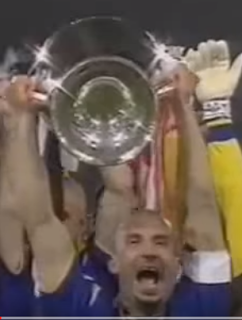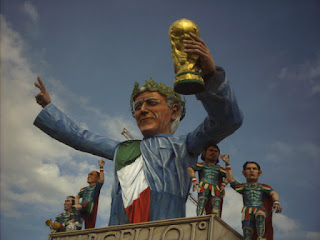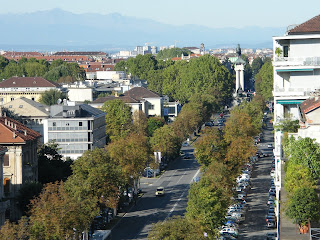Former Juventus manager ready to come out of retirement
 |
| Marcello Lippi |
Lippi, who as Juventus coach won five Serie A titles and the Champions League before taking the reins of the national team, subsequently had a successful career in China, where his Guangzhou Evergrande team won three Chinese Super League championships and the Asian Champions League.
He is the only manager to have won both the European Champions League and the Asian Champions League.
After winning his third league title with Guangzhou in November 2015 he announced his retirement, claiming he was too old to continue coaching. He stayed at the club as director of football but resigned from that position the following February.
He has not worked since but, after suggestions that AC Milan might part company with Serbian coach Sinisa Mihajlovic after a poor season in Serie A and turn to Lippi as a replacement, he said in January this year that he missed football and would be willing to return. Mihajlovic has since been dismissed, with youth coach Christian Brocchi taking the reins for the remainder of this season.
Lippi was born on this day in 1948 in Viareggio on the Tuscan coast, where he still lives. He spent much of his playing career in Genoa with Sampdoria, where he played as a central defender or sweeper.
He began his coaching career at the same club in 1982, looking after the youth team, before taking on his first senior team at Pontedera, a small club in Tuscany playing in the third tier. It is in the Italian tradition for coaches to gain a grounding in the lower divisions and Lippi did not experience Serie A until Cesena became his fifth club in 1989.
 |
| Gianluca Vialli lifts the European Cup after the 1996 Champions League final in Rome |
Lippi won the Serie A-Coppa Italia double in his first season, 1994-95, in which the Turin-based team also reached the final of the UEFA Cup and won the pre-season Supercoppa Italia, contested by the Serie A champions and Coppa Italia winners from the previous year.
In his second season, Juventus won the Champions League, beating holders Ajax on penalties in the final to win Europe's major prize for the first time since 1985. Runners-up in Serie A that year, the bianconeri reclaimed the title in 1997 and defended it successfully in 1998, finishing Champions League runners-up in both of those seasons.
Juventus's star-studded team during those years included Gianluca Vialli, Fabrizio Ravanelli, Didier Deschamps, Ciro Ferrara, Antonio Conte, Zinedine Zidane, Christian Vieri and Alen Boksic.
After a brief but unsuccessful stint as coach at Internazionale, Lippi returned to Turin for a second spell in charge and won two more Serie A titles. A new line-up that included Alessandro del Piero and goalkeeper Gianluigi Buffon also reached the Champions League final in 2003, losing to AC Milan on penalties in the final at Old Trafford, Manchester.
Watch: Alessandro del Piero scores against Germany in the 2006 World Cup semi-final
In all he won five Serie A titles, four Supercoppa Italias, one Coppa Italia and the Champions League with Juventus, as well as the European Supercup and the Intercontinental Cup.
But he topped all that after he was appointed Italy coach in 2004. Despite being under scrutiny when Juventus were implicated in a corruption scandal, he led Italy to unexpected World Cup success in Germany in 2006, when they defeated the hosts in a classic semi-final before beating France on penalties in the final.
This made Lippi the first coach to have won both the Champions League and the World Cup, a feat later matched by Spain's Vicente del Bosque in 2010. Lippi stood down as coach within days of his triumph and although he returned for a second spell in charge before the 2010 World Cup, a poor showing in the finals in South Africa led him to resign.
After his success in China, it seemed Lippi would be content to return to Viareggio, take to his boat and indulge his passion for sea fishing.
"I am in love with the sea in every aspect," he once said in an interview for a British newspaper. "I like it when it is windy, when it is mild, in summer, in winter. I feel very well when I am near the sea."
"But," he added, "it would not be a problem to work in a town where there is no sea." Milan, perhaps?
 |
| A giant-sized likeness of Marcello Lippi himself figured in the Viareggio Carnival after Italy's World Cup triumph (Photo: Wiki Lupetto CC BY-SA 3.0) |
Viareggio is a popular resort with excellent sandy beaches well known for its carnival, a month-long event dating back to 1873 that runs from February through to March and features parades of giant papier-mache floats designed to represent well-known public figures. The Tuscan resort is also notable for its beautiful Liberty-style architecture, much of it built in its heydey in the late 19th and early 20th century, many examples of which thankfully survived heavy bombing in World War Two when the town was a target because of its shipbuilding industry.
Travel tip:
Juventus play at the Juventus Stadium, an ultra-modern ground with a 41,000 capacity that has been their home since 2011. It is situated in a suburb in the northern part of the city, some seven kilometres from the centre, close to the Venaria exit on the city's Tangenziale ring road. The stadium is best reached by number 72 and 72b bus from the city. The stadium houses the Juventus museum, which highlights the history of the club, and there are guided tours of the stadium that include access to the dressing rooms, players’ tunnel and media areas on Mondays, Wednesdays, Thursdays, and Fridays. For more information, visit www.juventus.com
More reading:
Dino Zoff - record-breaking goalkeeper who became Italy boss
Arrigo Sacchi - the coach who revolutionised football in Italy
HomeArrigo Sacchi - the coach who revolutionised football in Italy








